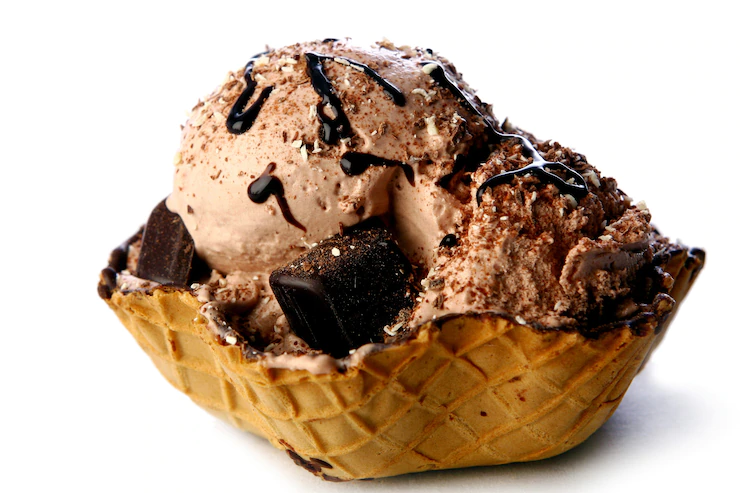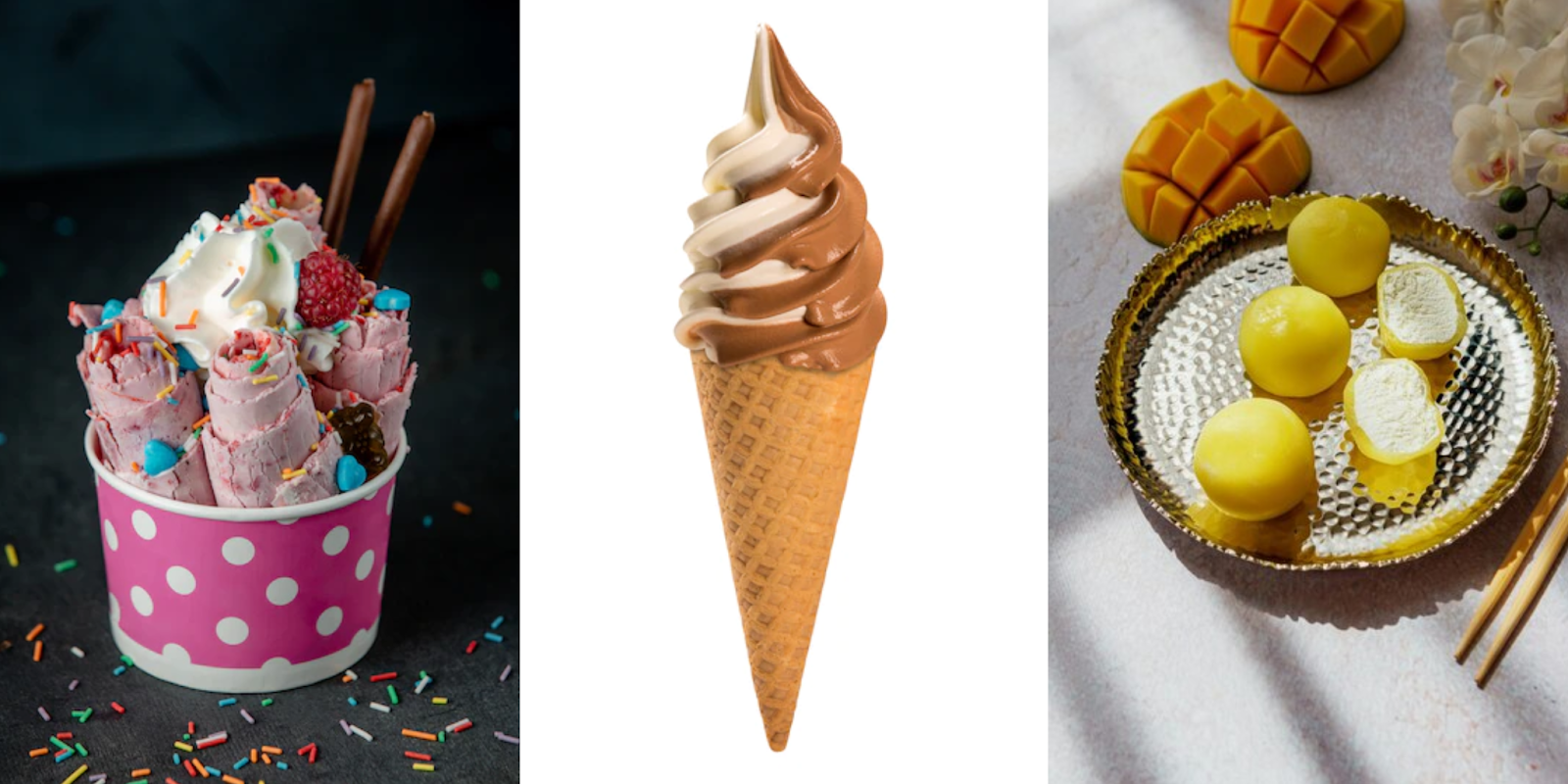
Who Invented Ice Cream? The Origin and History of Every Kid’s Favourite Dessert
We can fairly say that almost most children have a sweet tooth.
The relationship between children and dessert is as profound as it is pretty straightforward. Simply put, children seem to like sweets more because they are growing. Their bodies want energy to support their number one duty in life: play. In addition, they cannot resist the heavenly sweet taste nor the anticipated flow of happiness that is associated with consuming dessert.
Well, no one can actually resist that.
The thing about sugar is that it releases dopamine. Dopamine is the brain chemical that makes us feel happy. That is why sugar craving is in fact happiness craving. So sweets give kids physical energy and emotional energy too. No wonder they are all addicted to them.
From chocolate bars, chewing gums, jelly colas, marshmallows, and toffees, to biscuits, pies, cakes, and fruit puddings, there are hundreds and hundreds of varieties that suit every kid’s taste. However, there is one thing that is quite a worldwide favourite. It is ice cream.
What is ice cream, for real?

It is a pretty aptly named dessert. It is an icy, edible material made from milk. It is sweetened by either sugar, honey, maple syrup, or any other natural or artificial sweetener. Plus, it is flavoured with fruits or spices. The most famous flavours are vanilla, chocolate, and strawberry. Sometimes, it is also given different colours using food colourants.
It is always served cold, almost frozen. The most common way of consuming it is by licking it from the top of a wafer cone. Yet, the delightful dessert can also be served in a cup or a dish and eaten with a spoon, as a sandwich, or as an ice lolly.
Who invented ice cream?
Now, let’s take a few thousand steps back in time and explore who invented the delightful dessert.
The development of ice cream depends mainly on two things: the idea of using ice and honey to make a dessert and the way to keep it frozen, also known as refrigeration.
That said, it is quite hard to pinpoint a person or a country and say: this is the inventor of ice cream, to begin with. Yet, we can fairly say the primitive versions of this dessert were as old as prehistory itself.
Records show that frozen desserts of fruits and honey were associated with Persian cuisine. In China, desserts were made from ice and rice and stored in the snow. More frozen dessert recipes appeared in the Roman records later in the first century. Then, they made a presence in the Arab world.
Such frozen desserts were soon considered pretty valuable. That is because the process of getting and storing ice was super difficult.
Speaking of storing ice, there does not seem to be solid evidence for how frozen desserts were kept frozen. Yet, in the mid-16th century, salt suddenly came into the scene to play a critical role in the storing of ice cream.
It was discovered that when salt was added to cold water, it helped keep it cold for a longer period. That is because salt reduces the freezing point of water. So it takes more time to heat up and therefore stays cold for longer. That said, when salt was added to ice, it helped it stay ‘ice’ for longer. In other words, salt acted as a primitive fridge.
It was not long until salt was used to help ice cream stay iced.
In the mid-17th century, an Italian man opened an ice cream cafe in Paris. Soon after, the dessert became so popular. Its innovations and recipes then fired up in France. They began spreading to other countries thereafter.
Around the same time, a Scottish chemist named William Cullen came up with a chemical reaction using an organic compound called ethyl ether. This reaction resulted in a freezing effect. Cullen did not see any practical use or his discovery. But in the early 20th century, the same reaction was the base for the first electric refrigerator.
The invention of electric refrigeration made it a lot easier to make and store. It enabled more innovations to arise. This gradually resulted in a large number of the varieties and the mass production we have now.
How is ice cream made?
There are two ways to make ice cream. The first is the commercial way. This is the factory method used to produce large numbers of products to sell to shops on much larger scales. The other way is the economical way, also known as homemade ice cream.
The commercial way of making ice cream usually incorporates milk, ice, sugar, flavour, and air. Additionally, tiny percentages of stabiliser and emulsifier substances are added to help the fat stay evenly distributed in the mixture. Egg yolks are one example of good emulsifiers.
Fat usually comes from whole milk or cream. It makes the it rather smooth and rich in taste. The more fat is added, the richer the ice cream gets.
So to commercially make ice cream, milk, ice, and sugar are added at specific percentages in a large container and well blended. Then, the mixture is heated up to 85°C for more than 10 seconds then cooled again quickly. This heating/cooling process is called pasteurisation. It helps kill any bacteria in the mixture.
The next step is setting the mixture aside for up to a day. This increases the mixture’s viscosity, just like the pudding gets thicker as it cools down. Different flavours and colours are added at this stage.
After that, the mixture is frozen to several degrees below zero and beaten to incorporate air. This step makes it foamy and super smooth.
The final step is to pour the it into different moulds to produce different shapes and therefore different products. Those final products are then frozen to -24°C to solidify. Finally, they are packed and distributed.
Homemade ice cream is way easier to make since there are ready-to-make ice cream powder packs. Each pack contains all the ingredients necessary to make the ice cream.
All there is to do is combine the powder with cold water or milk then blend the mixture for a few minutes. Using water will bring out a good taste. However, using whole milk or milk with heavy cream guarantees a richer and more delicious taste.
Is ice cream the same everywhere?
Well, not exactly.
As we have mentioned earlier, each of the ice cream ingredients is added at a certain percentage. This will ensure the final product is tasty, smooth, and rich. Changing these percentages definitely results in a differently-textured dessert. Such a dessert is then given a different name and classified as a different kind of ice cream.
For instance, gelato is a frozen dessert that originated in Italy. The difference between gelato and regular ice cream is in the ingredients and how much of them is used.
For instance, gelato uses more milk and less cream. That means there is less fat in it. Having less fat allows the flavours to be a little more intense. Another difference is in the amount of air used to make gelato. It is much less in gelato than in ice cream. Less air does not create as much volume, making the gelato become dense and more fluid.
Gelato is also served at a temperature of -14°C to -6°C. This is much warmer than ice cream which is served at -14°C to -12°C. Warm temperatures make flavours have a stronger taste. On the other hand, they make the gelato more prone to melting at a faster pace.
Another different type of ice cream is the French version called glace. It uses eggs as a base and fat from butter whereas ice cream uses milk and cream. So the French version turns out heavier and creamier.
And so on.
Types of ice cream

There is absolutely no way to count all types of ice creams from all over the world. Every country seems to have its own version—or versions—of the frozen dessert. And each one of them is the result of a different variation in the ingredients, just like the gelato and glace we just mentioned.
But other worldwide types also include:
- Mochi: This is from Japan. It is a flavoured, coloured bun of the Japanese rice cake Mochi filled with ice cream.
- Snow cream: This is the Taiwanese ice cream version. It contains regular ice cream with different condensed milk and fruit toppings.
- Rolled ice cream: Coming from Thailand, ice cream rolls took the world by storm in 2015. They use milk, cream, sugar, and different flavours. All are well mixed then cooled quickly, rolled, served upright in a cup, and topped with different toppings. Watching the making of rolled ice cream is part of the happy rolled ice cream experience!
- Soft serve: Such an ice cream type is usually served by ice cream trucks during events such as festivals. It is made using milk, sugar, and flavours. Then it is swirled in a cone or cup. Since no eggs or cream are used, soft serve comes out lighter than regular ice cream and it melts faster too. A soft serve is the vanilla ice cream cone served in McDonald’s.
Conclusion
And so we come to the end of today’s sweet, delightful journey.
In this article, we talked about the origins of ice cream and how old it turned out to be—that was also surprising to me as well. Then, we learned how it is commercially made and how the homemade method is much easier thanks to the industrial revolution.
Though ingredients might be the same or just change a tiny bit, how much of them is added can result in a completely different version. That is why there are huge varieties of it worldwide. Every country makes it in its own way.
We hope you enjoyed this short lesson as much as we loved writing it for you. Though we probably know the answer, do you like ice cream? Which flavour is your favourite? What kind is popular in your country? Do you like ice creams served in ice cream shops and cafes or the supermarket-sold, packed ones?
Tell us in the comments.


Leave a Reply